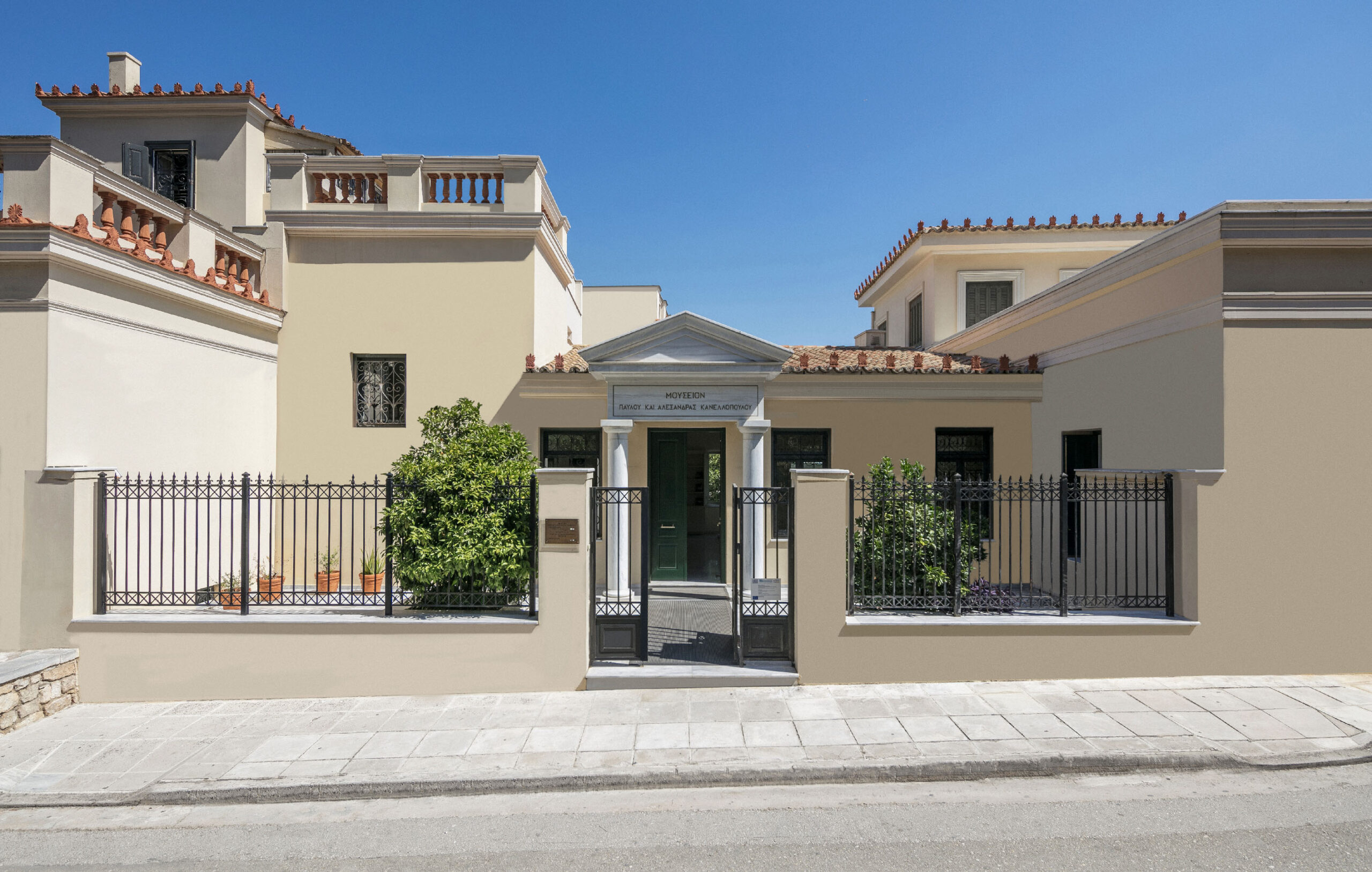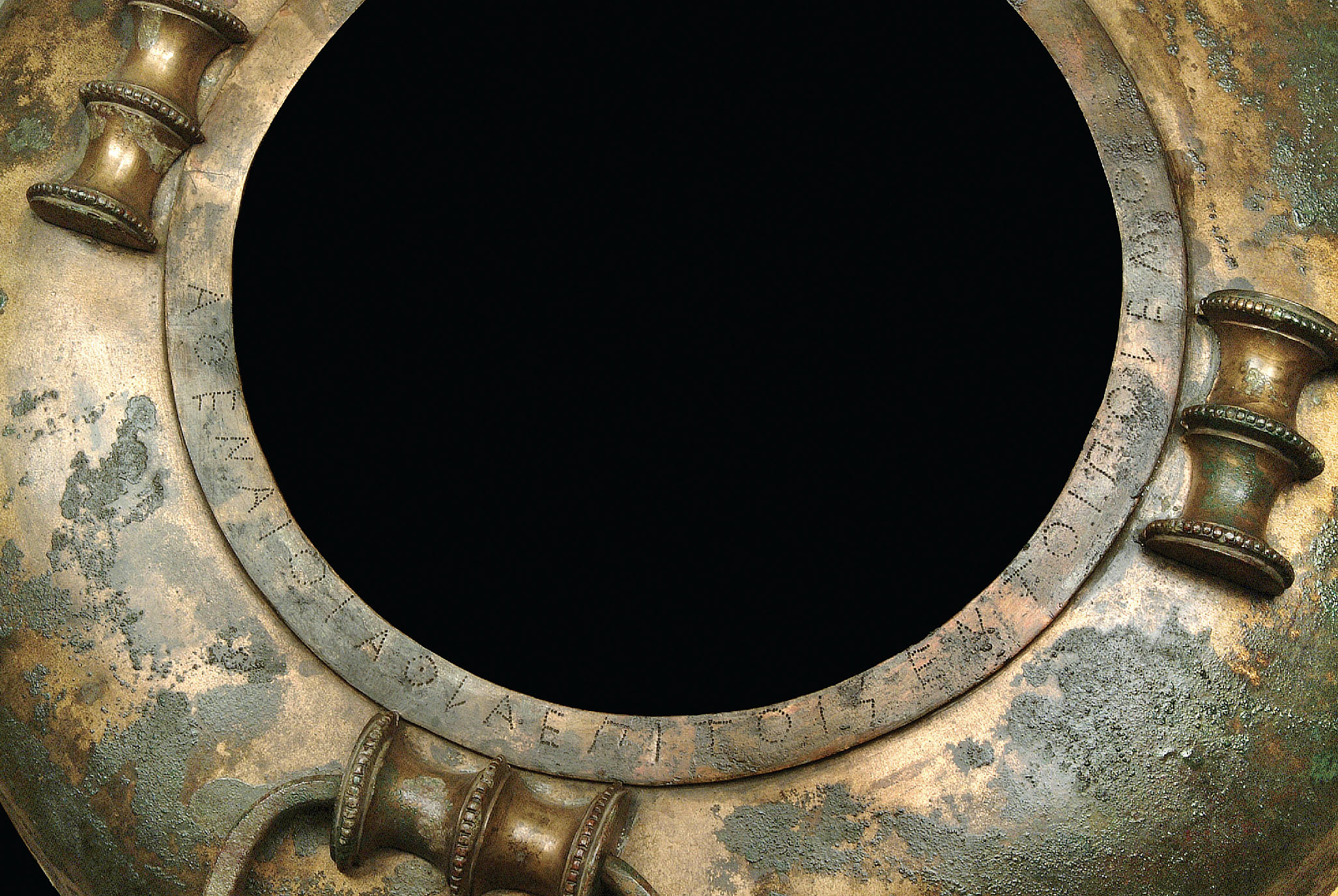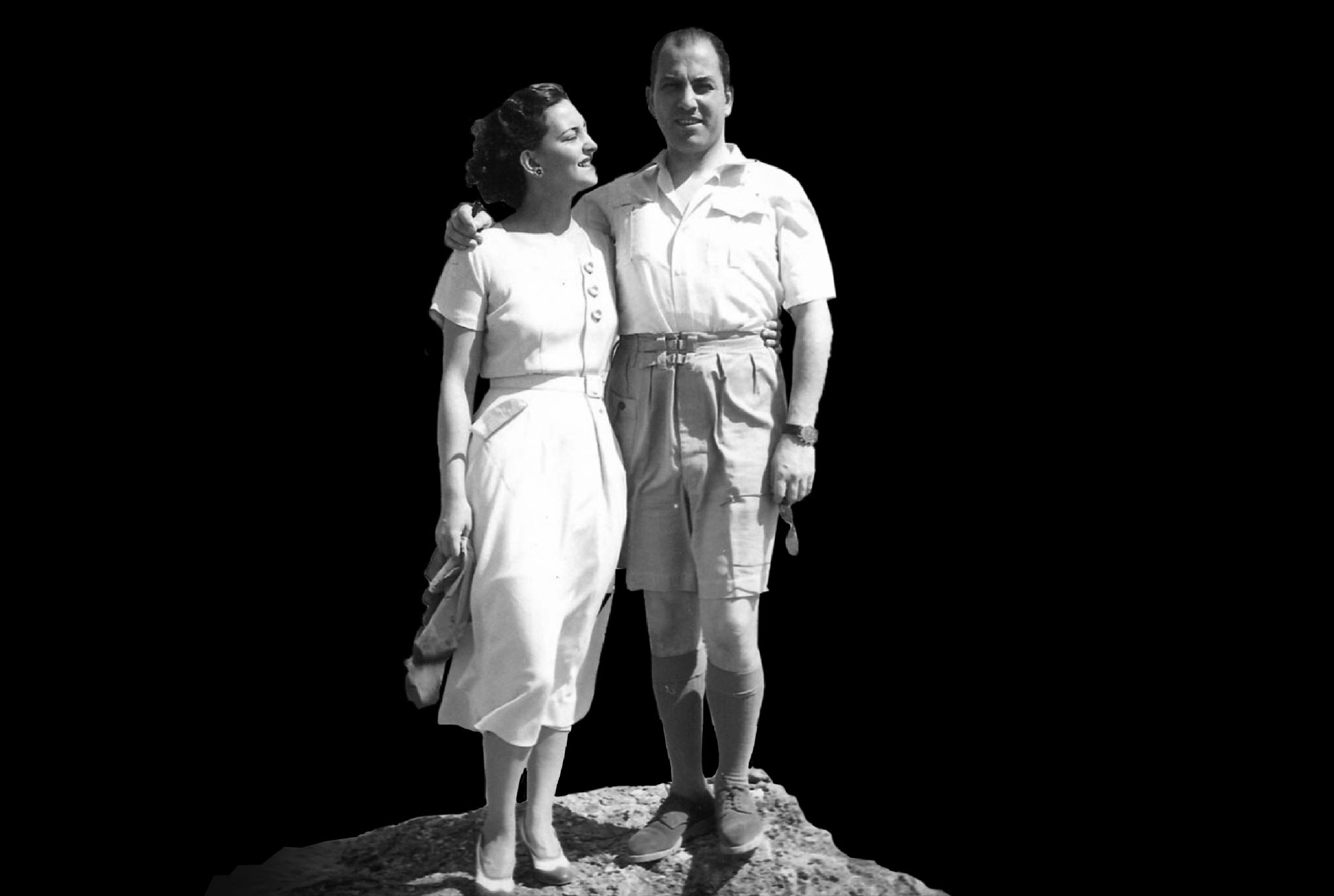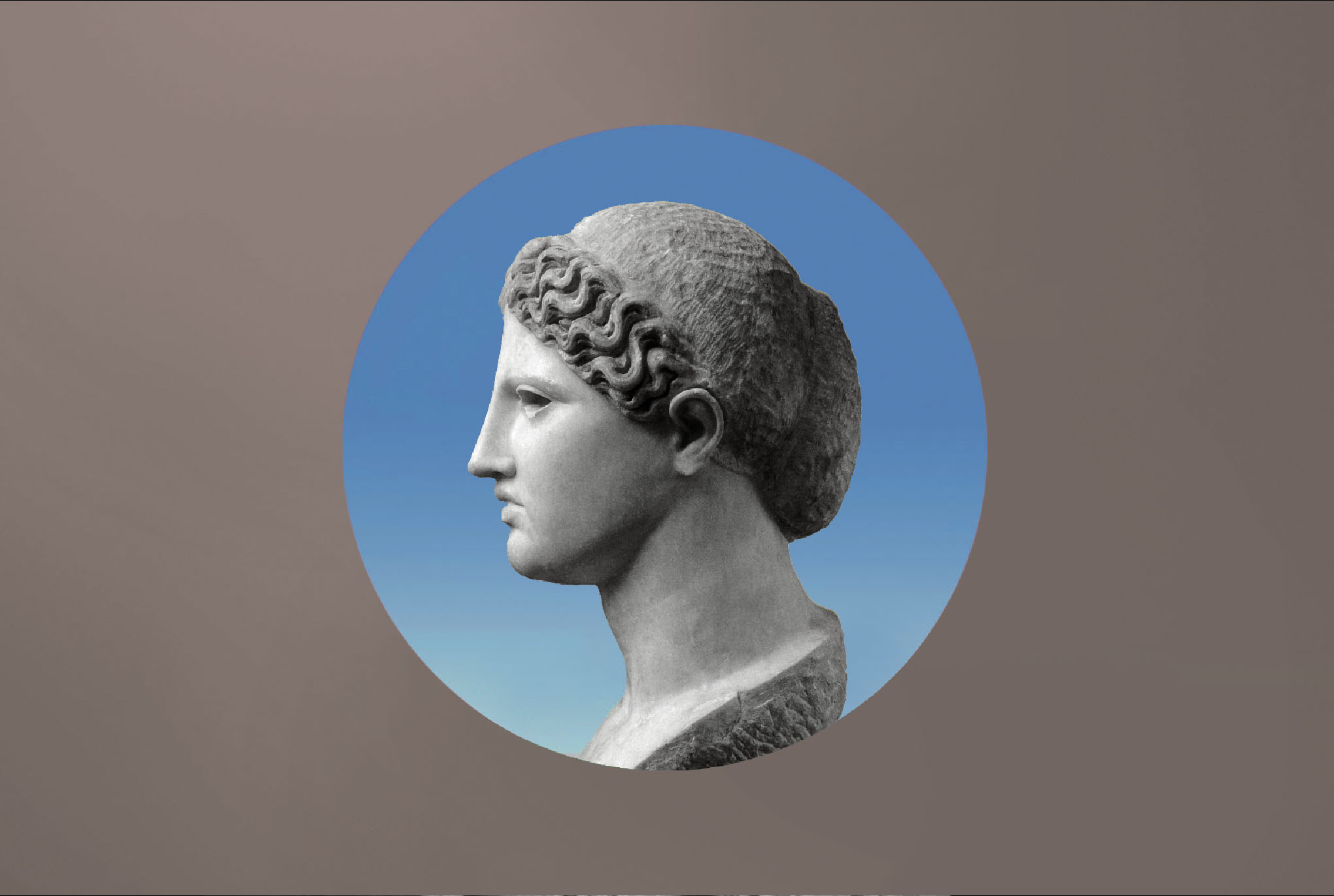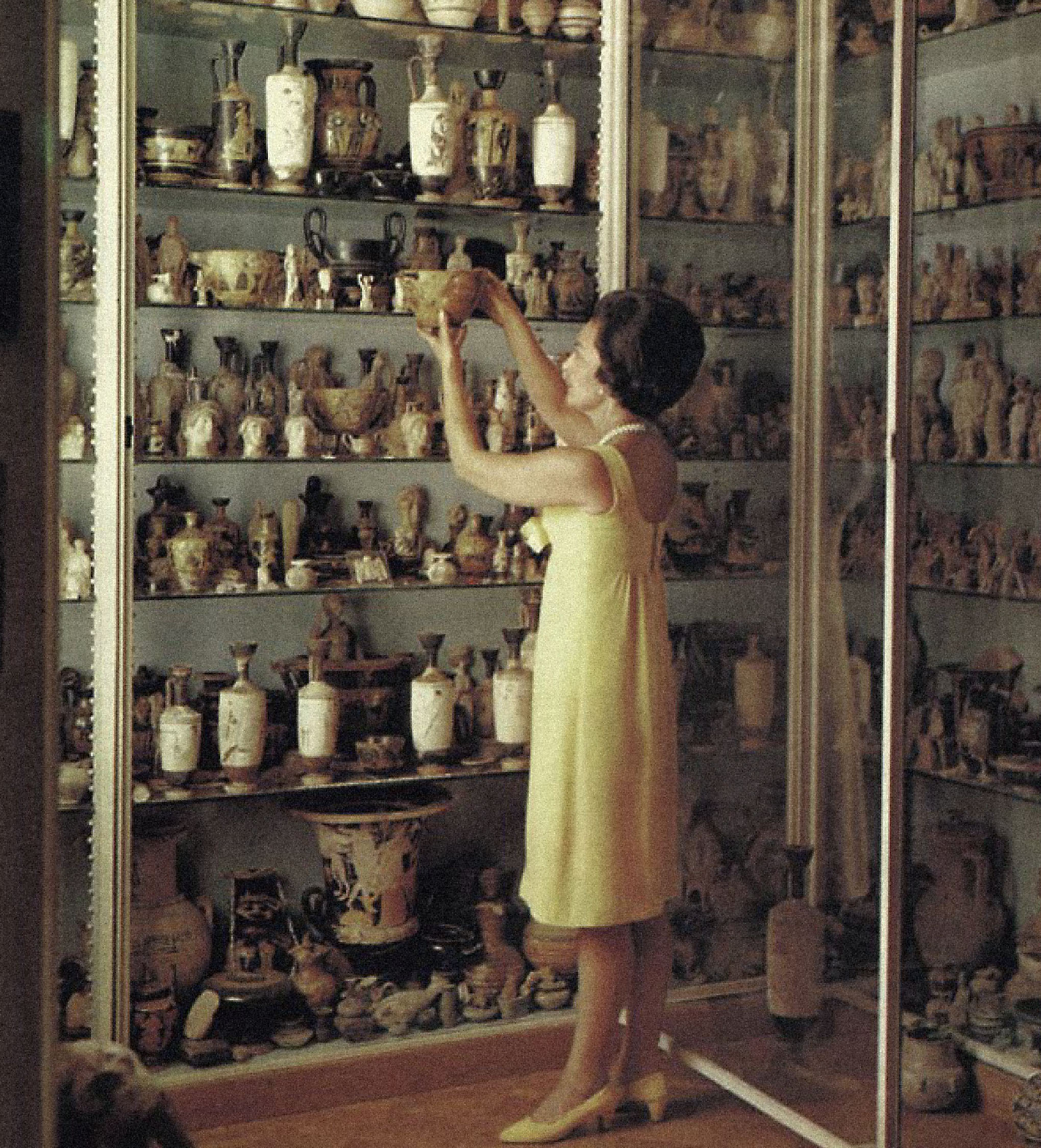The Buildings
The Michaleas Mansion
The Neoclassical home of architect Ioannis Michaleas and his family was constructed in the late 19th century at the junction of Theorias, Panos and Aretousas streets in Athens. The three-storey building, arranged over multiple levels, taking advantage of the gradient of the hill on which it is situated, is a landmark of the area. The Michaleas Mansion is located on the northern slope of the Acropolis and borders the archaeological site of the “Lion Bastion”. It is no coincidence that the Michaleas Mansion was used as a point of reference in the Minutes of The Archaeological Society of Athens in 1901 in order to orient the reader around the area, where a part of the “Valerian wall” is located. This particular location and the aesthetic and architectural values of the Michaleas Mansion inspired the famous Greek painter, Yannis Tsarouchis to depict the building in his paintings.

Transformation into a Museum
In 1963, still belonging to the heir of the Michaleas family, Paul Michaleas, also an architect, the building was expropriated following a Joint Ministerial Decision in order to house the Paul and Alexandra Canellopoulos Collection. The repairs and restoration works began in 1969 at the expense of the Greek state. The blueprints for the conversion of the mansion into a Museum were prepared by Paul Michaleas himself, who also supervised the works. During the repairs in the courtyard, a marble relief of exceptional quality was discovered, originating from the frieze of the Erechtheion, and promptly transferred to the Acropolis Museum. Other parts of marble sculptures and architectural elements also discovered on the property are now stored within the Roman Agora. Furthermore, part of the Rizokastro, the Byzantine fortification wall around the Acropolis, is located on the ground floor of the Mansion.

Inauguration
The Michaleas Mansion now comprises 15 exhibition spaces, offices, a library, a workshop and other amenities. Its characteristic interior features have been retained, including the painted ceilings on the first floor. In July 1976, CaMu opened its doors to the public, with the Paul and Alexandra Canellopoulos Collection bridging the past and the present. Konstantinos Tsatos, President of Greece and Prime Minister Konstantinos Karamanlis were present.
Renovation
By 1996, after 20 years of continuous operation, the building was in dire need of repair, mainly due to groundwater damage from the northern slope of the Acropolis. The Directorate of Studies of Museums and Cultural Buildings of the Ministry of Culture completed a restoration survey, which was implemented in 1996 with funding from the Archaeological Resources Fund. Following these renovations, the Collection was re-exhibited.

New Wing
By 2004, it was clear that the Museum required expansion. The available space was not sufficient to host all the antiquities and artworks of the Collection, with much of the Collection remaining in storage, waiting to be displayed once again. Alexandra Canellopoulos proceeded to purchase and donate the plot of land adjacent to the Michaleas Mansion, on Theorias and Aretousas streets. The Paul and Alexandra Canellopoulos Foundation, as always, supported this effort and the work of the Museum. The architect Paul Kalligas designed the Museum’s New Wing, doubling the available exhibition areas. The New Wing sits in perfect harmony with the Neoclassical mansion. Today, the building complex of the Museum welcomes its visitors from another entrance, introducing them to a circular route round the exhibits, arranged over four levels. During the construction of the New Wing, another part of the Rizokastro, the Byzantine fortification dating from the 13th century, came to light, along with the remains of a Medieval house, attached to the wall. Currently, both are visible next to the staircase that connects the two buildings. The ruins, well preserved and of significant historical value, have found a place in the timeless Canellopoulos Museum.

The excavation
The neighborhood of the museum is a palimpsest of history. During the renovation of the Michaleas Mansion in 1970, part of the Medieval wall of Athens was discovered. Τhe so-called Rizokastro surrounded the Acropolis hill, and was built in the 13th century, when Athens was under Frankish rule (Frankish Duchy of Athens, 1205-1456). Ιn another part of the plot, in 1969 a fallen fragment from the frieze of the 5th c. BC Erechtheum temple was discovered; the fragment is now exhibited at the Acropolis Museum.
In 2000, excavations conducted prior to the construction of the New Wing brought to light another section of Rizokastro, ca. 6 m. long. A little to the south, part of a late Byzantine house was unearthed with well-preserved entrance, threshold and a storage jar grounded on the floor.
The Rizokastro wall and the Byzantine house have been preserved and are accessible to the visitors of the museum – giving a rare glimpse into the world of Medieval Athens.

